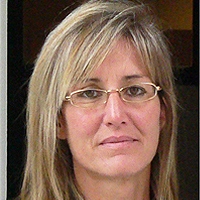Herbal approach for obesity management
Published on: 30th November, 2018
OCLC Number/Unique Identifier: 7943307930
Heftiness, a mind boggling interchange among ecological and hereditary factors and is related with critical horribleness and mortality. Utilization of herbs for the administration of heftiness in the ongoing occasions is pulling in consideration. A web and manual based writing overview was led to survey the measure of data accessible on the natural items for weight administration. Customary writing, PubMed, Scopus, Google researcher databases were screened up to February 2012. The pursuit words were “stoutness”, “home grown medication/items/separates”, “restorative plants”, “customary drug”, “Ayurvedic prescription” without narrowing/constraining looking words or components. Distributions just with edited compositions/full articles and books were inspected in the pursuit. In light of the accessible writing, for huge numbers of the natural and weight reduction items, there is minimal distributed data and there have been no clinical preliminaries or the level of proof is restricted. Our writing study additionally demonstrated that these home grown items fall under an adequate level of proof or with no scientific foundation by any stretch of the imagination, or they have a logical discerning however not to an acknowledgment level. Endeavors were made in the audit to characterize the highlights of conceivable natural weight reduction item. A perfect home grown enemy of stoutness item ought to diminish the weight by 10% over fake treatment of treatment by demonstrating a proof of change of bio markers like blood pres-beyond any doubt, lipids and glycemia with no reactions.
Impact of Microplastics on Human Health through the Consumption of Seafood: A Review
Published on: 14th June, 2025
Microplastics (MPs) pose a significant risk to human health, particularly through seafood consumption. Once ingested, MPs can spread from the digestive system to other organs via phagocytosis and endocytosis, leading to toxicological effects. Accumulation of MPs in tissues causes swelling, blockages, oxidative stress, and Cytotoxicity. Studies show MPs alter metabolism, disrupt immune function, and contribute to autoimmune diseases. Chronic exposure has been linked to neurotoxicity, vascular inflammation, and increased cancer risk due to DNA damage. MPs can cross biological barriers, including the placenta, affecting fetal development. Additionally, they serve as vectors for pollutants and bacteria, further complicating health risks. MPs in the bloodstream can trigger inflammatory responses, endothelial adhesion, and red blood cell coagulation, leading to cardiovascular complications. In vitro studies indicate MPs impair renal function and cause long-term inflammation in distal tissues. Moreover, oxidative stress caused by MPs plays a critical role in carcinogenicity. Despite growing evidence of adverse health effects, further research is necessary to understand the full impact of MPs’ exposure on human health and develop effective mitigation strategies.
Non-nutritive Sucking in Preterm Infants-simple Intervention with Substantial Benefits
Published on: 18th June, 2025
Preterm birth, defined as delivery before 37 weeks of gestation, remains a leading cause of neonatal morbidity and mortality globally. One of the developmental challenges in preterm infants is the immaturity of the sucking-swallowing-breathing triad, which hinders successful oral feeding. Non-Nutritive Sucking (NNS) is an innate reflex in neonates that involves sucking motions without the intake of nutrition. This behaviour, often facilitated by pacifiers or a gloved finger, plays a vital role in neurodevelopment, feeding maturity, and physiological regulation in preterm infants. Recent studies also highlight its psychological and lactational benefits for mothers. This review presents a synthesis of current evidence supporting NNS as a low-cost, non-invasive intervention with multidimensional benefits for both preterm infants and their mothers.
Ra-223 dichloride management in a Nuclear Medicine Unit: experience of a referral institution
Published on: 27th August, 2017
OCLC Number/Unique Identifier: 7286425794
Ra-223 dichloride is a first-in-class alpha-emitting radiopharmaceutical recently introduced into clinical practice for treatment of men with Castration-Resistant Prostate Cancer (CRPC) and symptomatic bone metastases. Due to the proven benefit on Overall Survival and the favorable toxicity profile, Ra-223 therapy is gaining widespread use in both US and Europe. In this article, we describe the routinary management of patients undergoing Ra-223 treatment in our Institution.
Currently, Ra-223 therapy is indicated for 6 intravenous injections (55 kBq per kg of body weight) administered every 28 days. In comparison to other radiopharmaceuticals, Ra-223 handling and administration do not need any additional training for authorized users. Due to the minimal external dose rate emission, Ra-223 dichloride can be delivered in an outpatient setting. Moreover, no particular precautions other than standard hygiene measures must be taken by patients’ family members or caregivers. Ra-223 therapy is associated to a favorable hematologic toxicity profile, while non-hematologic adverse events are generally mild and easy to manage.
Given the favorable toxicity profile of this treatment, clinical trials are currently ongoing to evaluate efficacy and safety of Ra-223 treatment in combination or sequence with recently approved drugs such as abiraterone acetate, enzalutamide and sipuleucel-T. In addition, the recent interest in Ra-223 bone lesion dosimetry could open the way to a dosimetric-based therapeutic approach with Ra-223. In this new scenario, results of these promising clinical trials may help clarifying the optimal sequencing of new therapeutic possibilities for metastatic CRPC and the appropriate eligibility criteria for Ra-223 treatment in oncologic patients.
Evaluation of Uranium in Organs of Residents from an Uranium-Rich Region using Teeth as Bioindicators
Published on: 26th March, 2020
OCLC Number/Unique Identifier: 8588716918
The Uranium extraction and processing plant of INB (Brazilian Nuclear Industries) is in Caetité, a city located in a region hosting the largest Uranium reserve of the country. The degree of Uranium contamination in the Caetité population was investigated before using teeth as bioindicator, where a quite high Uranium concentration was measured in this region, about 160 times higher than the world-wide average. Radiobiological risks are here evaluated from Uranium burdens in organs as skeleton, kidneys, liver, tissues and blood, which were estimated from transfer coefficients and effective internal doses. This was accomplished by means of calculations with the use of the STATFLUX/ICRP approach, plus a set of Uranium transfer rate parameters as function of individual’s age assuming an uninterrupted exposure over a period of 60 years. It was found that U ingestion rates by residents of Caetité are three orders of magnitude higher than worldwide average, indicating that food and water would exhibit high levels of contamination. Calculated effective internal doses range from a minimum of one to a maximum of three orders of magnitude higher than background doses, for blood and bones respectively. The likelihood that this circumstance could lead to serious health problems as e.g. neoplasia is addressed. The methodology presented in this work offers subsidies for further studies on environmental pollution by radionuclides.
Effects of Preoperative Training on Static and Dynamic Balance among Female Athletes with Injured ACL
Published on: 2nd October, 2024
Aims: The purpose of this research was to study the effects of preoperative training on static and dynamic balance among female athletes with injured ACLs. Methods: This semi-experimental study involved a 2-group pretest-post-test design. Subjects were 36 (19 control and 17 experimental) female athletes with injured ACLs, that were chosen with the available sampling method. The experimental group did the preoperative training in the eight weeks and the control group did not participate in any training program during this period. Static and dynamic balance and lower body muscle strength were measured. The paired sample T-test was used to compare pre and post-test results and the independent sample T-test achieved comparisons between the two groups. Results: The results indicated that static (with eyes opened and closed) dynamic balance and muscle strength were improved significantly (p < 0.05) in the exercise group, but no significant change (p > 0.05) was found in the control group. Also, significant differences were found in improvement changes results between the two groups (p < 0.05). Conclusion: Results of the study confirmed that preoperative training can have a beneficial effect on improving static and dynamic balance among female athletes with injured ACLs.
AngioJetTM rheolytic thrombectomy induced intravascular haemolysis leading to Acute Kidney Injury requiring Dialysis
Published on: 3rd August, 2018
OCLC Number/Unique Identifier: 7815114583
Background: AngioJetTM rheolytic thrombectomy has been used in the treatment of deep vein thrombosis (DVT) to prevent post-thrombotic syndrome. Though not widely appreciated, it has the potential to cause intravascular haemolysis.
Report: A 37 year old man with no previous medical history presented to his GP with a three week history of progressive right upper limb swelling. Doppler imaging confirmed right upper limb DVT and CT scan demonstrated thoracic outlet syndrome. The patient underwent AngioJetTM thrombectomy followed by IV heparin infusion. Successful revascularisation of the occluded vein was achieved. Overnight he developed haematuria, which was initially attributed to IV heparin. Urinalysis however revealed no red cells or casts. Apart from an Hb drop from 134 to 117 his blood profile and blood film showed no abnormality. He subsequently developed progressive oliguria with marked oedema and acute kidney injury (AKI). His creatinine peaked at 1070umol/l at 96 hours post procedure and he was started on intermittent dialysis. He remained dialysis dependent for 6 days. Ultrasound imaging excluded urinary obstruction. Autoimmune and vasculitic serology were negative. Intravascular haemolysis and haemoglobinuria was confirmed by raised LDH (1714u/L) and low haptoglobin (<0.1units). Direct Coomb’s test, Cold agglutinin test and paroxysmal nocturnal haemoglobinuria screen were negative. The patient’s renal function normalised over 3 months.
Conclusions: The likely cause of this man’s AKI is heme pigment nephropathy from intra-vascular haemolysis. Increased awareness of this condition may allow early identification and intervention to reduce the risk of renal injury from AngioJetTM associated haemolysis.
High energy lasers and new applications
Published on: 14th August, 2020
OCLC Number/Unique Identifier: 8656784701
In the beginning of 1973 in the USSR the study of possibility of LJE designing was conducted. The reflector, located in the tail of the rocket prototype, concentrated the obtained radiation in air and ensured micro-burst that the reactive thrust was created. The successful results of different models of the reflectors tests, which were at the same time the laser light receivers, had been obtained. One should note that all experiments pointed out above were conducted with the use of electric discharge CO2- lasers with power up to 10 kW, while for the injection into orbit of different highly and technologically effective equipment (global network connections, Internet, photo-monitoring of Earth surface, debris cleaning) the radiated power substantially higher is required. Thus, for example, for SC launching with the weight 1000 kg the laser with power not less than 15 MW is necessary [1,2].
A study of 12c +12c nuclear reaction using a new M3Y-type effective interaction
Published on: 20th August, 2020
OCLC Number/Unique Identifier: 8872658487
This paper is a study of nuclear reactions involving 12c + 12c nuclei carried out with a heavy-ion nucleus-nucleus optical potential derived from a new M3Y-type effective interaction, called B3Y-Fetal, within the framework of optical model at the incident energies of 112, 126.7, 240, 300, 1016 MeV. Folding analyses of the differential cross sections associated with the elastic scattering of the nuclear system, determined at these incident energies with four B3Y-Fetal-based folded potentials constructed from double folding model, have shown the DDB3Y1- and BDB3Y1-Fetal potentials to be the best in excellent agreement with previous work done with the M3Y-Reid. The agreement of the B3Y-Fetal with the famous M3Y-Reid effective interaction, which is also used for folding analysis in this work, is further buttressed and well-established by the findings of this study Herein, the values of the renormalization factor, NR ranging from 1.1117 to 0.8121, obtained with the B3Y-Fetal have been found to be slightly higher, with lower reaction cross sections, aR = 1418 - 1047 millibarns, than NR = 0.9971 - 0.8108 obtained with the M3Y-Reid effective interaction whose accompanying reaction cross sections, being higher, range from 1431 to 1050 millibarns. This depicts the B3Y-Fetal as having a better performance. Additionally, results of folding analyses have shown the best-fit folded potentials, DDB3Y1- and BDB3Y1-Fetal potentials to be in agreement at all incident energies, implying that the cold nuclear matter has an underlying soft equation of state.
Research of Potential Production 94mTc in Medical Cyclotron
Published on: 22nd October, 2024
To expand the spectrum of used radiopharmaceuticals, it is proposed to obtain a positron-emitting isotope of technetium 94mTc. The intention of this work is to research the possibility of producing various technetium isotopes on a medical cyclotron. For this purpose, we carried out a series of irradiations of an aqueous solution of molybdenum of natural isotopic composition with protons of 11 MeV energy. After technetium isolation, results were analyzed on a γ-spectrometer. 511 keV gamma-ray line was obtained.




